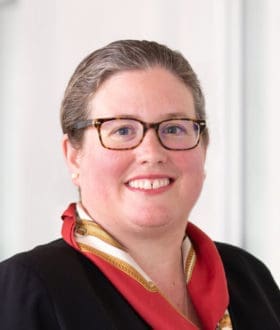ARCHITECTS’ ROUNDTABLE – SEPTEMBER 2021
September 2021On 15 September, Beale & Co were delighted to host its latest Architects’ Roundtable for leading architectural practices.
The roundtable provided an opportunity for architects to reflect on the key issues, some new and some prevailing, that are affecting the industry and to debate the challenges of today and the future.
The roundtable focussed on four main topics:
- Simon Allford (RIBA President)’s plans for the RIBA 2021 – 23
- Building Safety Bill: Recent amendments and its potential impact
- Fire Safety and Professional Indemnity Insurance
- Beyond Net Zero: The climate change challenges and opportunities for the built environment sector
A summary of the discussions is provided below. A further roundtable will be arranged in due course to follow up the points raised in these discussions and highlight new developments in the industry.
- Plans for the RIBA 2021-23
Beale & Co were delighted to welcome Simon Allford, RIBA’s recently appointed President. Simon summarised some of the main challenges facing architects and the construction industry more generally as he saw them. These included the climate emergency, the post-COVID-19 world, Grenfell and accessibility to the profession.
The roundtable heard some of Simon’s ambitions for the RIBA over the next two years. These included his aim to refurbish the Institute at 66 Portland Street, to widen access to RIBA to everyone interested in architecture and to create a “House of Architecture”, open to all, to encourage debate, engagement and collaboration surrounding architecture.
It was generally felt by attendees that the construction industry could use the challenges presented by Simon as an opportunity to make radical improvements for the benefit of the profession.
- Building Safety Bill: Recent amendments and its potential impact
An update was provided on the progress of the Building Safety Bill and the changes that can be expected, together with the timescales for these.
Some concerns were raised about the Building Safety Bill, including the extent to which architects will be required to complete the fire safety statement, whether any competency issues arise, who will be responsible for appointing the fire engineer and whether fire safety statements can be limited to account for differing levels of involvement throughout the project.
The changes to the Defective Premises Act (DPA) were also considered. The general feeling was that successful DPA claims are rare and this is unlikely to change given that the requirements to succeed in a claim have not been changed. The attendees noted that the amendments were more compliance related. From a contractual perspective, there is a concern that employers could use the changes to the DPA in order to alter the balance of risk in contracts.
Attendees agreed that it will be interesting to follow the outcome of the consultation and understand areas where the scope of the Building Safety Bill may expand in the future.
- Fire Safety and Professional Indemnity Insurance
The roundtable discussed the current difficulties in the UK insurance market, with many companies unable to obtain cover to meet contractual requirements or finding fire safety restrictions/exclusions in their policies. The general theme in the market is that premiums are increasing whilst cover is getting narrower.
The attendees considered the importance of speaking with insurers and/or brokers so that they understand the company’s approach to risk management and also ensuring that any cover limitations are reflected in client appointments.
The need to consider the scope of fire safety and allocation of risk was also discussed, with a particular focus on who attendees felt should bear the risk in relation to fire safety. Attendees considered that the risk should be borne by those best able to bear it. In the case of fire safety, it would be preferable for the fire safety consultant to be directly appointed by the client.
The use of joint/project insurance policies was debated. Some attendees were hopeful that such policies would eventually be introduced in the UK however, concerns were also raised about the use of these policies, with it being noted that the cultural differences between the UK and Europe in their approach to contracts and risk could mean that these policies were not a success in the UK.
The new version of the EWS-1 form was considered briefly. It was noted that changes are still needed to make it clearer.
- Beyond Net Zero: The climate change challenges and opportunities for the built environment sector
The attendees considered the climate change challenges and the potential opportunities arising for the sector. The four key goals of the forthcoming COP26 climate conference in Glasgow due to take place in November 2021 were noted: (a) secure global consensus of need to reach net zero by 2050 (b) reach agreement for the need to adapt (c) global finance to funds goals and (d) government, businesses and the public to work together to achieve goals more quickly.
There are clearly huge opportunities for the construction sector with new methods of construction, technology and materials but it was noted that there are also risks associated with these opportunities, as some manufacturers will just market “sustainable” products. In addition, attendees discussed the issue of gaps between design and performance and the potential need for a new handover process whereby designers and contractors stay involved afterwards to ensure designs operate as intended.
The roundtable considered whether net zero/climate change targets are currently being included in appointments or contracts. Some attendees mentioned having seen vague references to sustainability strategies, but the general consensus was this is not being dealt with substantively yet in contracts. It was noted that it is nonetheless part of a duty of care to ensure that construction professionals involved in projects do document carefully any environmental or sustainability standards and obtain approval where necessary.
Download PDF











